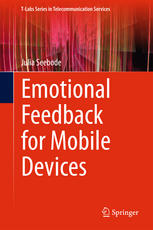

Most ebook files are in PDF format, so you can easily read them using various software such as Foxit Reader or directly on the Google Chrome browser.
Some ebook files are released by publishers in other formats such as .awz, .mobi, .epub, .fb2, etc. You may need to install specific software to read these formats on mobile/PC, such as Calibre.
Please read the tutorial at this link: https://ebookbell.com/faq
We offer FREE conversion to the popular formats you request; however, this may take some time. Therefore, right after payment, please email us, and we will try to provide the service as quickly as possible.
For some exceptional file formats or broken links (if any), please refrain from opening any disputes. Instead, email us first, and we will try to assist within a maximum of 6 hours.
EbookBell Team

0.0
0 reviewsThis book investigates the functional adequacy as well as the affective impression made by feedback messages on mobile devices. It presents an easily adoptable experimental setup to examine context effects on various feedback messages and applies it to auditory, tactile and auditory-tactile feedback messages. This approach provides insights into the relationship between the affective impression and functional applicability of these messages as well as an understanding of the influence of unimodal components on the perception of multimodal feedback messages. The developed paradigm can also be extended to investigate other aspects of context and used to investigate feedback messages in modalities other than those presented. The book uses questionnaires implemented on a Smartphone, which can easily be adopted for field studies to broaden the scope even wider. Finally, the book offers guidelines for the design of system feedback.